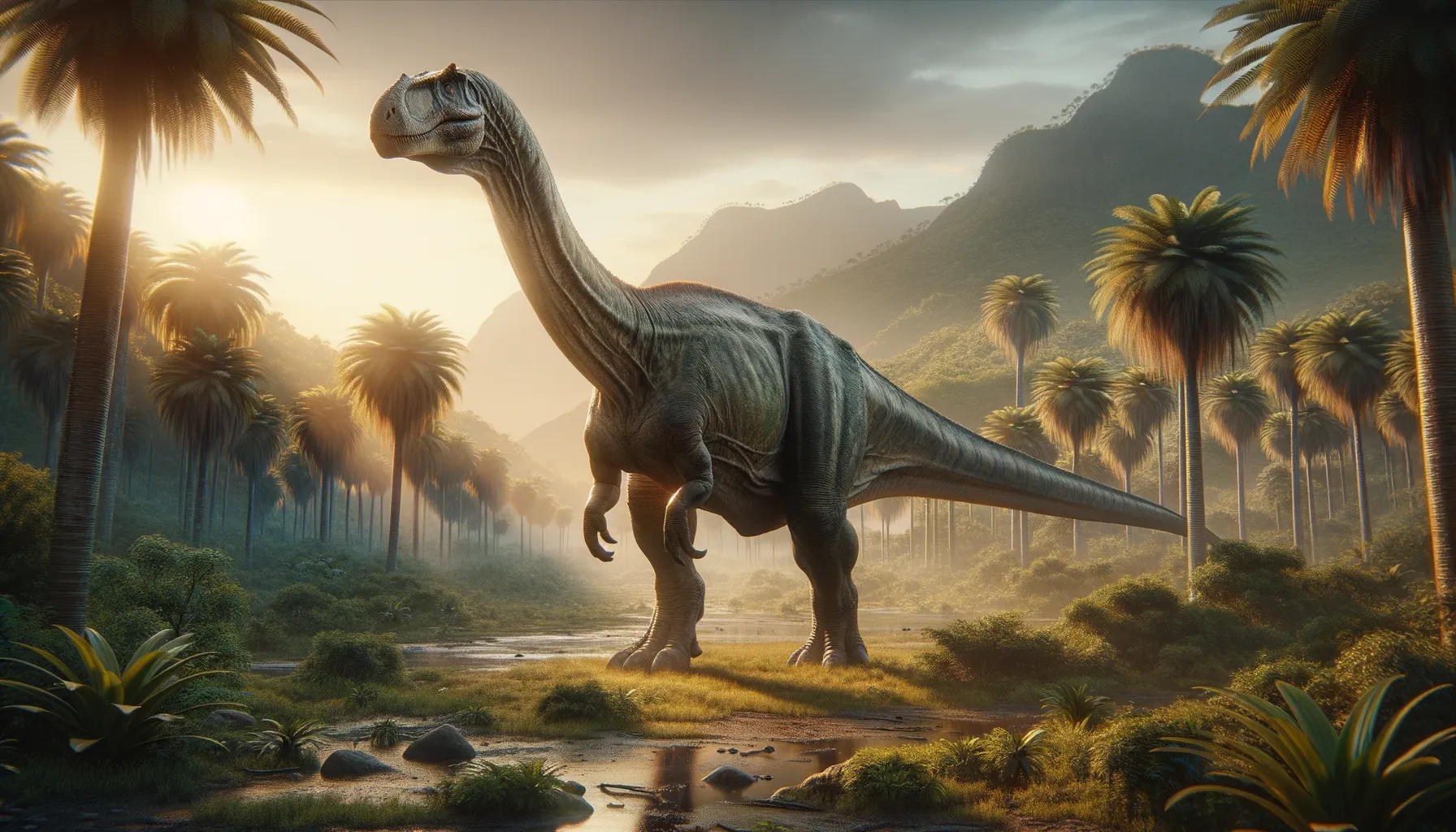
Tapuiasaurus
Giant of the ancient Brazilian forests.
Period
Cretaceous
Length
About 40 feet long.
Height
Around 15 feet tall.
Weight
Approximately 9 tons.
Tapuiasaurus is a sauropod dinosaur known for its long neck and massive size, belonging to the titanosaur group. It was a plant-eater roaming the land millions of years ago in what is now Brazil. Its discovery provided insight into the diversification of titanosaurs and their spread across ancient continents during the Early Cretaceous period.
Diet
Tapuiasaurus was an herbivore, feeding mainly on plants. Its long neck allowed it to reach vegetation that other species might have missed, ensuring a steady intake of foliage for sustenance.
Hunting
As a herbivore, Tapuiasaurus did not engage in hunting. Instead, it likely spent much of its day foraging for plants and trees to feed on, using its vast size to deter predators.
Environmental challenges
Tapuiasaurus faced the challenge of finding enough food to sustain its large size, especially during dry seasons when plant resources were scarce. Its sheer body mass also meant it needed vast areas to roam in search of nutrients. Predators and environmental changes could have posed threats to their survival, requiring them to adapt over time.
Speed
Tapuiasaurus was likely slow-moving.
Lifespan
Estimated around 70 to 80 years.
First discovery
Discovered in Brazil in 2011.
Fun Facts
- Tapuiasaurus was a long-necked dinosaur, belonging to the group known as titanosaurs.
- This dinosaur lived during the Early Cretaceous period, approximately 120 million years ago.
- Fossils of Tapuiasaurus were discovered in Brazil, specifically in the Minas Gerais region.
- Despite its large size, Tapuiasaurus was a herbivore, meaning it primarily ate plants.
- Tapuiasaurus is known for having one of the most complete skulls of any sauropod from South America.
- The name 'Tapuiasaurus' means 'Tapuia lizard,' named after an indigenous tribe in Brazil.
- Its discovery has helped scientists understand more about the evolution and diversity of titanosaurs.
Growth and Development
The growth rate of Tapuiasaurus was likely influenced by its environment and food availability, with juvenile dinosaurs growing rapidly to decrease vulnerability to predators. Its long neck and strong legs developed to support its extensive feeding habits. Fossil records suggest it grew in size steadily, achieving full growth over several decades.
Habitat
Tapuiasaurus inhabited the warm, humid environments of ancient Brazil, filled with lush vegetation. Its habitat included dense forests and open areas with abundant plant life. The environment was likely rich in other dinosaur species, insects, and early mammals.
Interaction with other species
Tapuiasaurus likely coexisted with other herbivores and smaller prey species, with minimal competition due to its unique feeding strategies. Its sheer size made it an imposing presence among contemporaneous fauna, possibly deterring predators. Fossil evidence suggests interactions were largely limited to competition for plant resources.
Natural lifespan
Its natural lifespan likely ranged from 70 to 80 years.
Reproduction
Tapuiasaurus likely reproduced by laying eggs in nests, with soil or vegetation used for incubation. The reproductive strategy might have involved laying multiple eggs at once to increase chances of offspring survival. Parental care was minimal, as with most large sauropods, leaving the young to fend for themselves shortly after hatching.
Social behaviour
Tapuiasaurus may have lived in groups or herds to provide safety in numbers against predators. Herding also allowed them to efficiently graze vast areas. Communication might have included low-pitched sounds to maintain group cohesion in dense forests.
Fossil locations
Fossils of Tapuiasaurus have been predominantly found in Brazil, specifically in the Quiricó Basin. These discoveries provide essential insights into the geographical spread and diversification of titanosaurs during the Cretaceous period. Fossil sites contribute to understanding the prehistoric ecosystems of South America.
